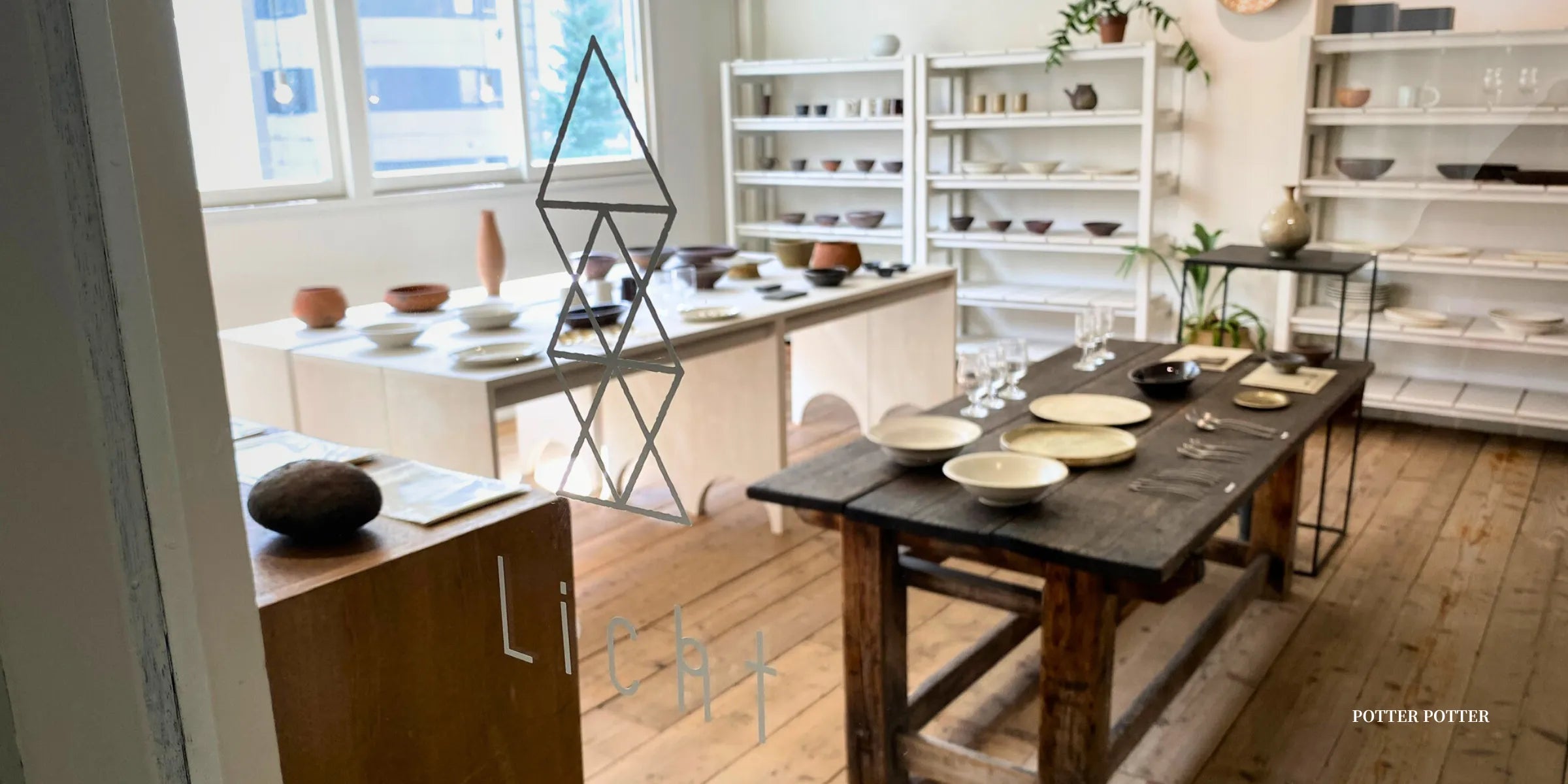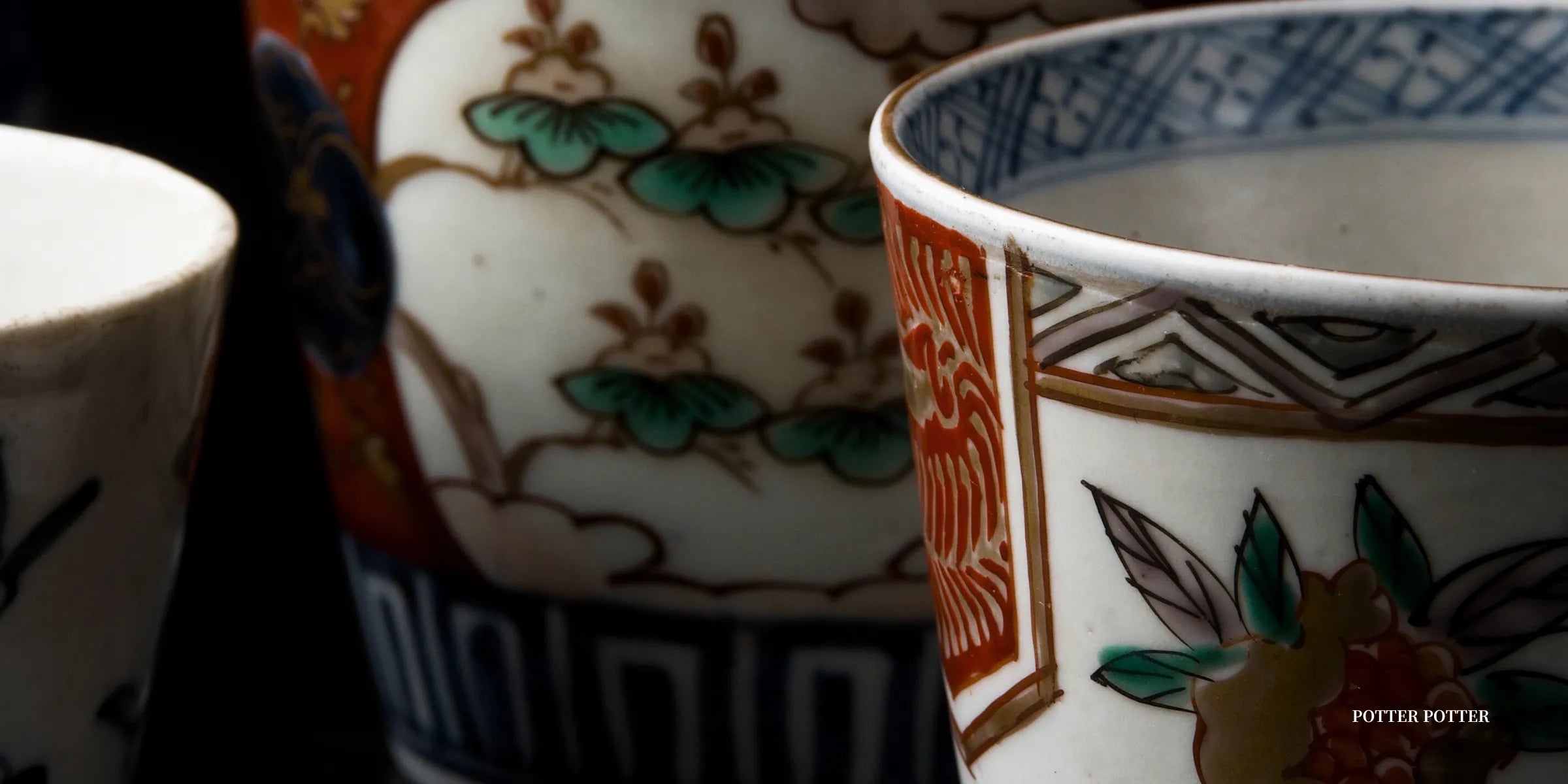
History of Japanese Pottery: From Jomon to Modern Times
What makes Japanese pottery unique in the world of ceramics? With over 10,000 years of history, it evolved from simple utilitarian objects to a refined art form, reflecting Japan’s changing social and aesthetic values. This journey offers a rich glimpse into the nation’s cultural evolution.

|
Table of Contents |
Jomon and Yayoi Eras: The Birth of Japanese Pottery
Japanese pottery’s origins trace back to the Jomon period, a prehistoric era in Japan that began around 14,000 BCE and lasted until 300 BCE. Jomon pottery is characterized by its unique cord-marked patterns, which were created by pressing ropes or cords into the wet clay before firing. This technique not only gave the pottery its name—Jomon means “cord-marked”—but also distinguished it as one of the world’s earliest ceramic traditions. The pottery of this era was primarily functional, used for cooking, storage, and ceremonial purposes. Early Jomon pottery was typically deep, round-bottomed vessels with wide openings, designed to facilitate cooking over open flames.
As the Jomon period progressed, the pottery became more sophisticated, with intricate designs and varied shapes. The “Flame-style” pots of the Middle Jomon period (around 2500-1500 BCE) are particularly notable for their dramatic, flame-like protrusions and elaborate decorations. These pots were not just functional items but also served as ritualistic objects, reflecting the spiritual beliefs and customs of the Jomon people.
Following the Jomon period, the Yayoi period (300 BCE - 300 CE) introduced a significant shift in pottery production and style. Yayoi pottery was more utilitarian and less decorative compared to its Jomon counterparts. It featured thinner walls and more symmetrical shapes, thanks to the introduction of the potter’s wheel. The pottery was primarily used for everyday tasks, including storing and cooking food, and its surface was generally smooth and unadorned, reflecting the Yayoi people’s focus on practicality. This period marked a transition from the hunter-gatherer lifestyle of the Jomon people to a more settled, agrarian society, which in turn influenced the development of pottery as an essential part of daily life.
Advancements in the Kofun and Heian Periods: Sueki and the Six Ancient Kilns
The Kofun period (300-538 CE) saw the introduction of new pottery techniques and styles, largely influenced by cultural exchanges with the Korean Peninsula and mainland China. One of the most significant developments of this era was the creation of Sueki (Sue ware), a high-fired stoneware that was a departure from the low-fired earthenware of earlier periods. Sueki was made using the potter’s wheel and fired at temperatures exceeding 1200°C in an oxygen-reducing atmosphere, resulting in its distinctive grayish-blue color. The high firing temperature also made Sueki harder and more durable than its predecessors. This stoneware included various forms such as cups, bowls, and jars, often featuring simple, elegant shapes with minimal decoration. Sueki marked a significant technological advancement in Japanese ceramics, laying the groundwork for future developments in pottery and kiln technology.
During the Heian period (794–1185), Japan’s pottery scene underwent further evolution with the establishment of the Six Ancient Kilns: Seto, Tokoname, Echizen, Shigaraki, Tamba, and Bizen. These kilns became the centers of pottery production in Japan, each developing its own distinct styles and techniques. For instance, Seto ware was one of the first to adopt glazing, drawing inspiration from Chinese ceramics. It often featured a variety of forms, including bowls, plates, and jars, with glazes ranging from ash to iron. Bizen ware, on the other hand, was renowned for its unglazed, reddish-brown finish with natural ash glaze effects, resulting from the high-temperature firing process.
The Six Ancient Kilns are noteworthy for their diversity and adaptability. They each exploited the natural resources available in their regions, including different types of clay, kiln structures, and firing techniques. For example, Shigaraki ware, made in the mountainous Shigaraki region, often displayed the unique characteristics of the local clay, which contained feldspar and quartz, creating a textured surface. This ware was typically fired at high temperatures, resulting in the characteristic natural ash glaze effects that became highly valued in Japanese aesthetics. These kilns played a crucial role in establishing the foundation of Japanese pottery, influencing ceramic styles and techniques for centuries to come.
Momoyama to Edo Periods: The Golden Age of Japanese Pottery
The Momoyama period (1573-1603) is often regarded as the golden age of Japanese pottery. It was during this time that the art of tea—chanoyu—gained prominence, significantly influencing the development of Japanese ceramics. Tea masters, particularly Sen no Rikyu, favored a rustic and understated aesthetic, known as “wabi-sabi,” which embraced simplicity, naturalness, and imperfection. This aesthetic preference led to the creation of various types of tea ware, including Shino, Oribe, and Raku ware, each with distinct characteristics.
Shino ware, produced in the Mino region, was among the first Japanese ceramics to use a thick, milky-white glaze made from feldspar. It often featured simple designs, such as brush-stroked grasses and geometric patterns, which were applied using an iron oxide underglaze. Oribe ware, another Mino creation, was more vibrant, characterized by its striking green copper glaze and asymmetrical forms. It introduced a playful, innovative style that broke away from the traditional symmetry of earlier pottery. Raku ware, associated with the Raku family of Kyoto, was hand-molded and fired at a low temperature, resulting in unique, textured surfaces that embodied the wabi-sabi aesthetic. The rough, natural appearance of Raku tea bowls made them highly prized by tea masters and connoisseurs.
The Edo period (1603-1868) marked the rise of porcelain production in Japan, particularly with the discovery of porcelain clay in Arita, Saga Prefecture. Korean potters who had been brought to Japan played a crucial role in this development, introducing techniques and skills that enabled the production of high-quality porcelain. Arita ware, also known as Imari ware, quickly gained popularity both in Japan and abroad. Imari ware was characterized by its bright cobalt blue underglaze, often accompanied by overglaze enamels in red, green, and gold. The intricate and colorful designs of Imari ware made it a sought-after commodity, especially in Europe, where it became a symbol of luxury and sophistication. During the same period, Kakiemon ware, another Arita variant, became famous for its delicate and refined overglaze decorations, featuring motifs such as flowers, birds, and mythical creatures.
This era also witnessed the establishment of numerous regional kilns across Japan, each producing ceramics that reflected local tastes and traditions. For example, Kutani ware from Ishikawa Prefecture became known for its bold and colorful designs, often depicting landscapes, flowers, and mythical creatures. Satsuma ware, originating from the southern island of Kyushu, was famous for its creamy crackled glaze and intricate overglaze painting, often featuring scenes of Japanese life and nature. The variety and creativity of ceramics produced during the Edo period solidified Japan’s reputation as a world leader in the art of pottery.
The End.
The history of Japanese pottery is a testament to the nation’s continuous innovation, cultural exchange, and deep appreciation for nature. From Jomon-era cord-marked pottery to Arita porcelain, each period contributed unique styles and techniques. The Six Ancient Kilns, tea wares of the Momoyama period, and global influence of Imari porcelain highlight Japan’s ceramic heritage. For a deeper understanding, visit pottery regions like Seto, Bizen, and Arita, where traditional methods are still practiced. Museums like the Tokyo National Museum offer rich ceramic collections, while hands-on workshops provide insight into this timeless art form. Japanese pottery’s embrace of simplicity, natural beauty, and imperfection invites us to appreciate the artistry in everyday objects.

